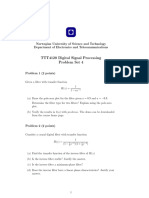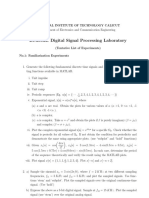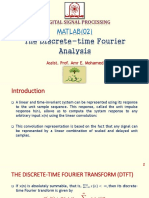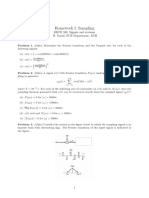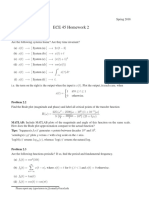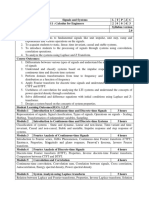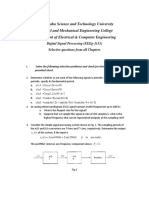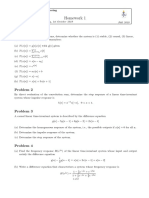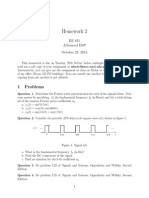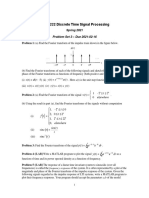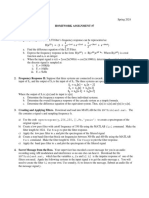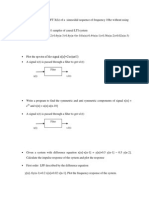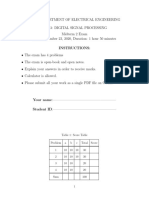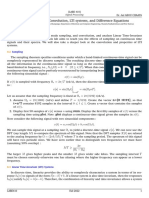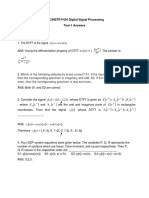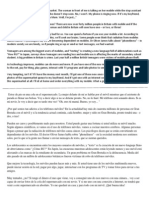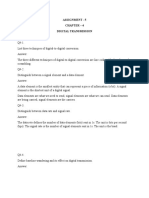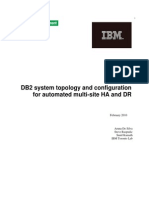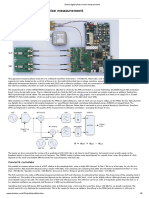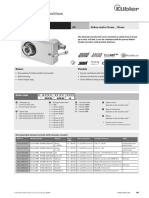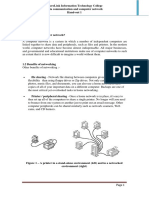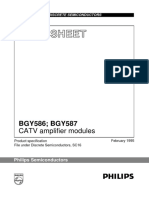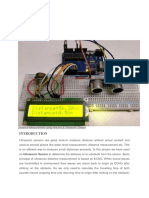0% found this document useful (0 votes)
136 views3 pagesAssignment 2-1
This document provides the details for Problem Set 2 of the Digital Signal Processing course at the Norwegian University of Science and Technology. It includes 4 problems related to representing signals and systems in the frequency domain, and the sampling theorem. Problem 1 has 5 parts involving Fourier transforms of signals and periodic extensions. Problem 2 involves Fourier transforms of time-shifted and time-reversed signals. Problem 3 examines the frequency responses of 2 systems and uses MATLAB to plot them. Problem 4 deals with sampling an analog signal at different rates and playing the sampled signals.
Uploaded by
opus2012Copyright
© © All Rights Reserved
We take content rights seriously. If you suspect this is your content, claim it here.
Available Formats
Download as PDF, TXT or read online on Scribd
0% found this document useful (0 votes)
136 views3 pagesAssignment 2-1
This document provides the details for Problem Set 2 of the Digital Signal Processing course at the Norwegian University of Science and Technology. It includes 4 problems related to representing signals and systems in the frequency domain, and the sampling theorem. Problem 1 has 5 parts involving Fourier transforms of signals and periodic extensions. Problem 2 involves Fourier transforms of time-shifted and time-reversed signals. Problem 3 examines the frequency responses of 2 systems and uses MATLAB to plot them. Problem 4 deals with sampling an analog signal at different rates and playing the sampled signals.
Uploaded by
opus2012Copyright
© © All Rights Reserved
We take content rights seriously. If you suspect this is your content, claim it here.
Available Formats
Download as PDF, TXT or read online on Scribd
/ 3

